Hi all,
I do not know which Carburettor is the correct one for a Norton 16H (1936)
I have the following options:
Carb_1:
The wrong Body (Type:??) wrong flange and a oblique float chamber (1AT)
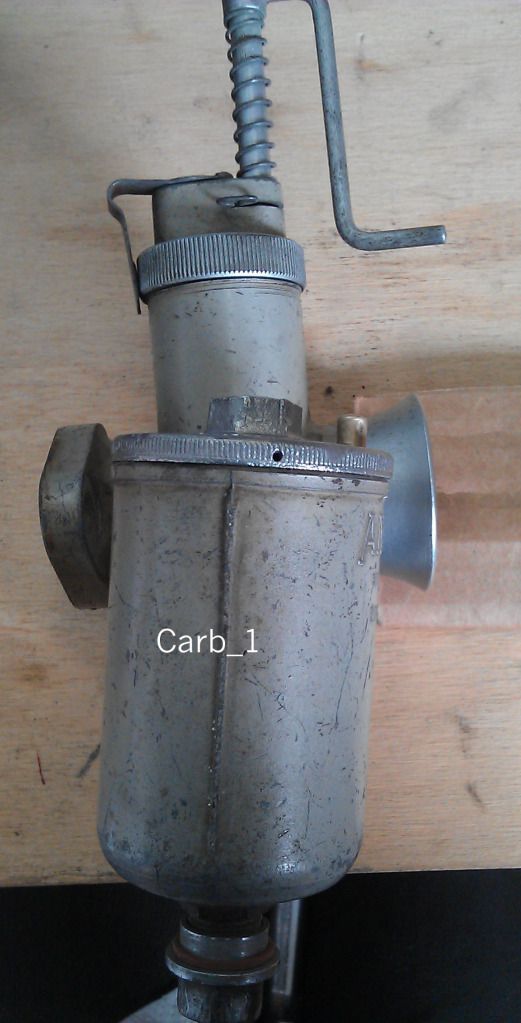
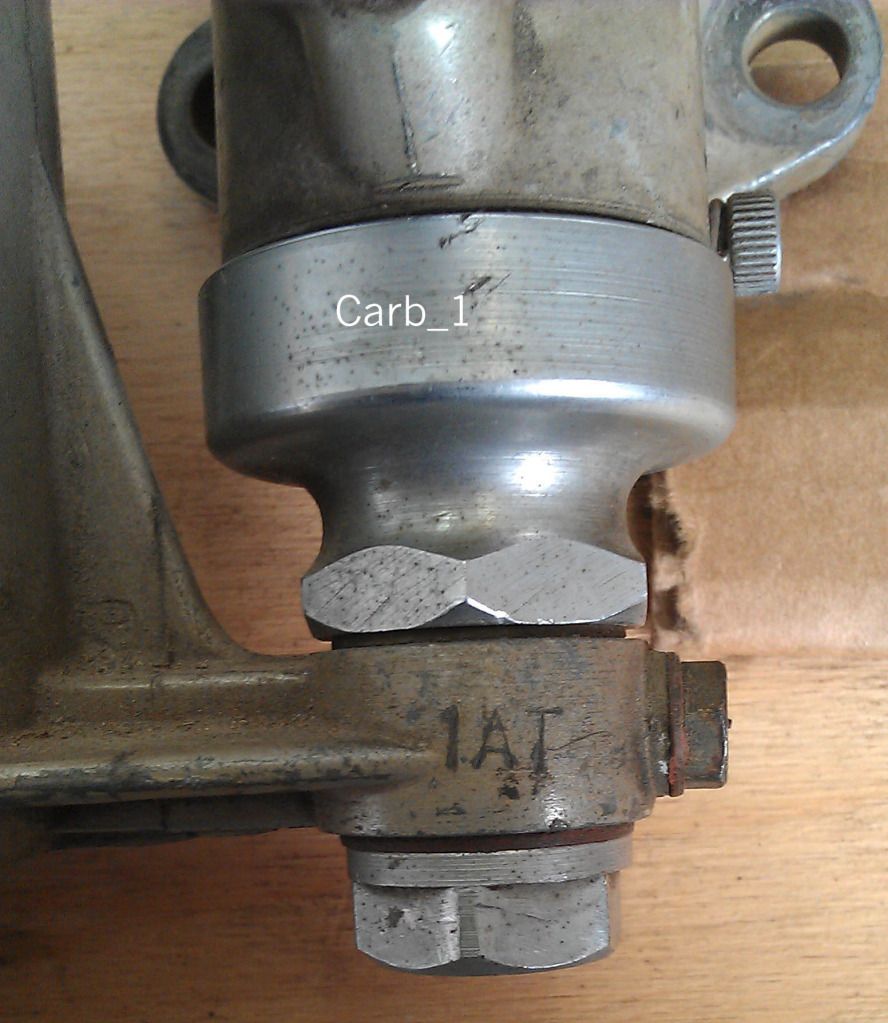
Carb_2:
Straight floating boal and the correct flange Body Type:276AE/1BE but I am unsure if the floating chamber is correct (labeling:64-56)
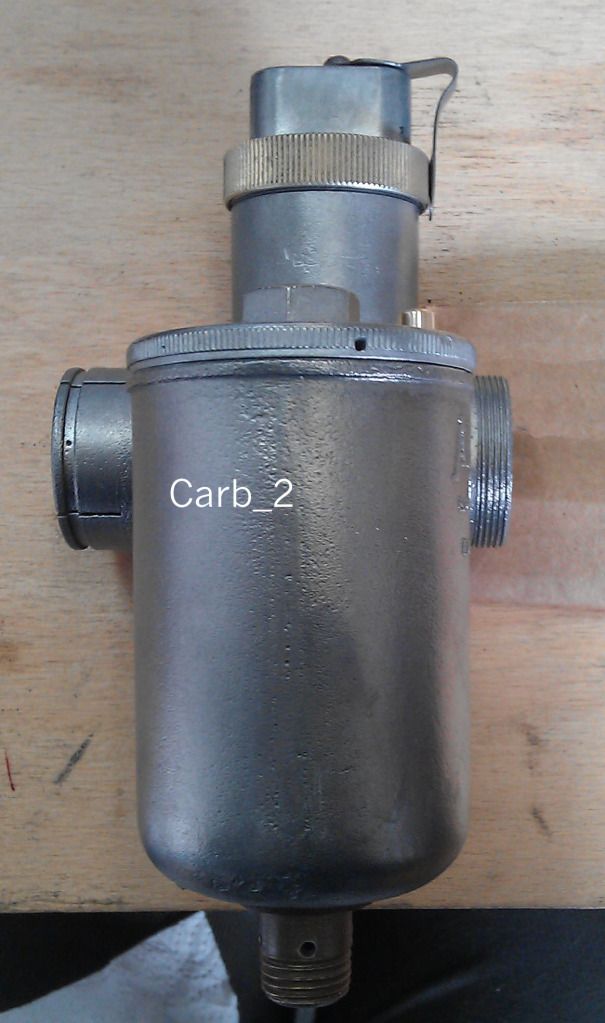
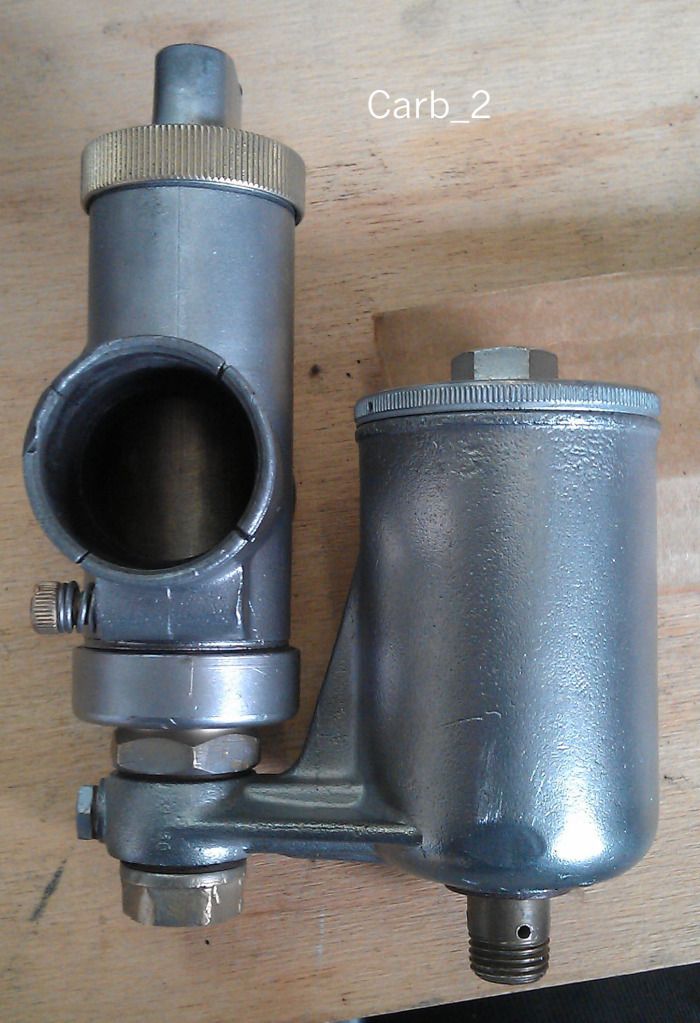
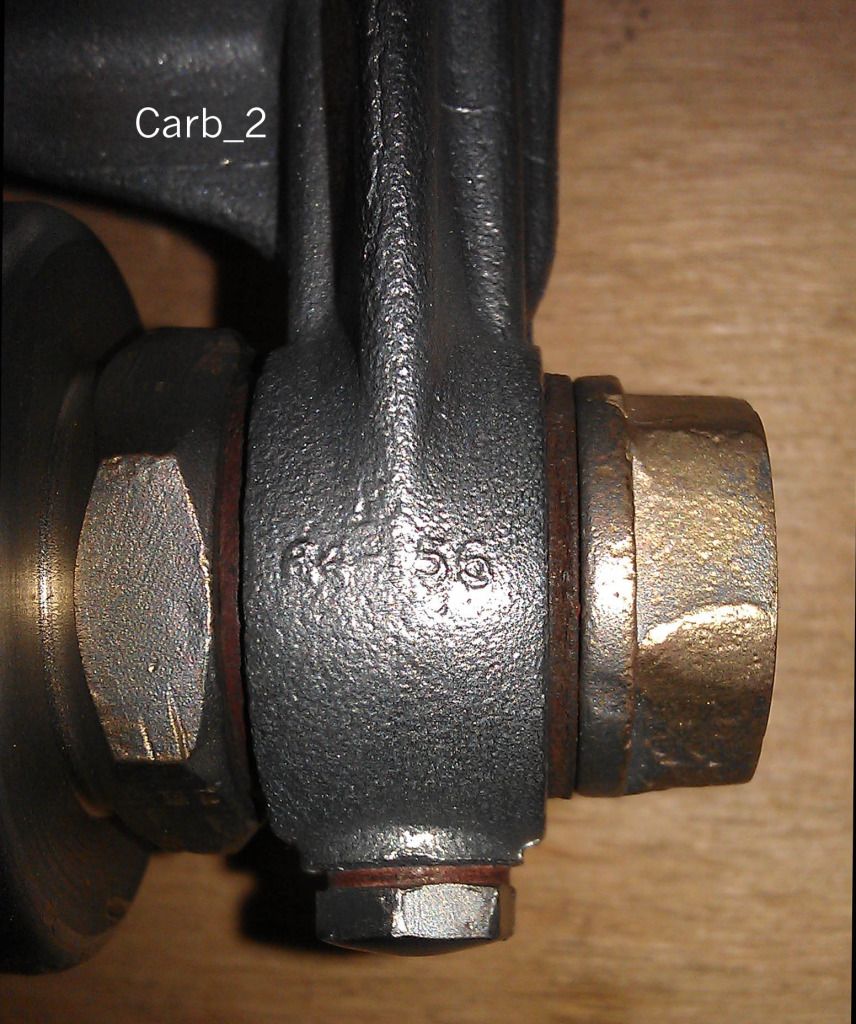
Carb_3:
Straight floating boal and the correct flange, Body Type:276AE/1BE but I am unsure if the floating chamber is correct (labeling ?)
?)
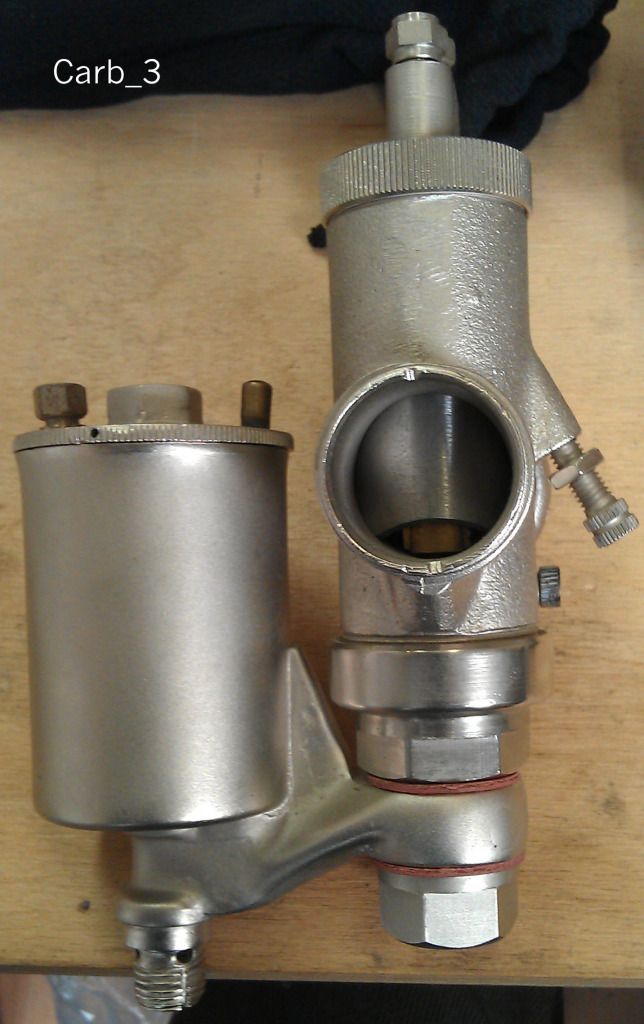
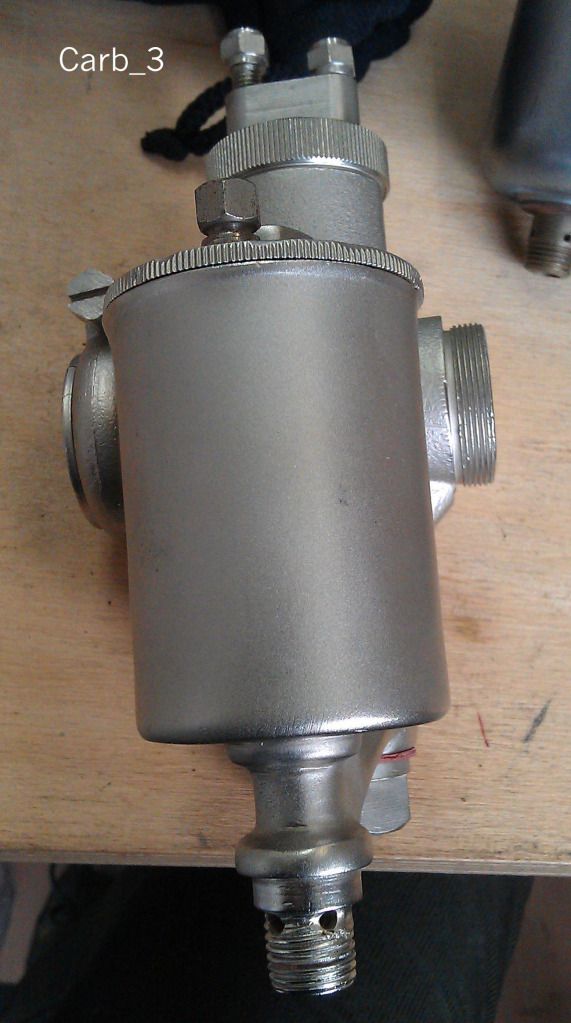
The body Type 276AE/1BE is correct I guess, but all carbs have different float bols and also different adapter (Screw and Nut to connect Body and float chamber)
could anyone advise which parts shall be put together to get an original carburator setup
Which kind of plating was applied to all the carb parts Except the aluminium body and float chamber?
Thanks a lot in advance.
Phillip
email (option): phillip.thaler@gmx.at
Phillip,
The first carb is certainly not correct for a pre-war Norton and you'll struggle to fit an adapter allowing the fitment of that type of flange to the side-valve engine. You don't give the number of the body but the 1AT float chamber is a 7° item used amongst others on the post-war BSA C11 and B33, the RE 500cc twin and the Triumph Tiger 100.
You need a vertical float chamber as the cylinder and carb sit vertically.
The original carb on a pre-war civilian 16H was the type 76 (with the pilot air drillings around the mixing chamber). The correct type was the 76/011V with 64/069 float chamber. This was superseded on the military models by the 276/011 with 264/069 float chamber - effectively an interchangeable instrument but with the pilot air feed via the inlet tract.
During the course of the war, Amal adopted a new identification system and the 276/011 became the 276AE with the 1BE float chamber. Item 2 seems to meet this specification. The raised number on the float chamber is simply a casting number.
I'm a little puzzled by the third item as it seems to be a plated brass 276. This vaguely rings a bell, as does the form of the float chamber. Could it be from a pre-war Triumph twin ? Ron will probably know. If so, you should find a ready buyer.
Phillip the Amal list for a WD 16H 1940-45 states a 276AE/1BE. I haven't got any information for earlier models but probably a model 76 carb was in use back then.  I'm sure Rik or someone will know. Unless you are intent on getting it to original specification, I'd go with your carb number 2, especially as you already have one. I think the '1B' will indicate an upright bowl with spigot fitting for fuel pipe and the 'E' is probably the code for length of the bottom conecting tube with banjo. Ron
I'm sure Rik or someone will know. Unless you are intent on getting it to original specification, I'd go with your carb number 2, especially as you already have one. I think the '1B' will indicate an upright bowl with spigot fitting for fuel pipe and the 'E' is probably the code for length of the bottom conecting tube with banjo. Ron
Ah! typing together Rik!
email (option): ronpier@talk21.com
Hi Phillip,
Rik is correct for 36 is was a 76/011 1" bore and a 64/069 float, both would have been brass and dull plated the float chamber top would have been bright chrome. It would have had the shallow mixing chamber nut. Not sure when they went onto the alloy 76 type carb and float chamber. But by 1940 they were fitted with the 276/AE/1BE. You can still pick these latter NOS bodies on Ebay. Ron is also right with his description of the markings on the alloy float chamber some are made to fit a banjo at the base and some have the petrol pipe union screwed straight to the base of the float chamber, hope this helps.
Tim W
email (option): t.j.walker@btinternet.com
Hi all,
Thanks a lot for the infos. Since more than 1 year I try to find a 76/011 on ebay without success. So if I can find such a body and float chamber, could I use all the parts indicated with the red arrows on the 76/011 body?
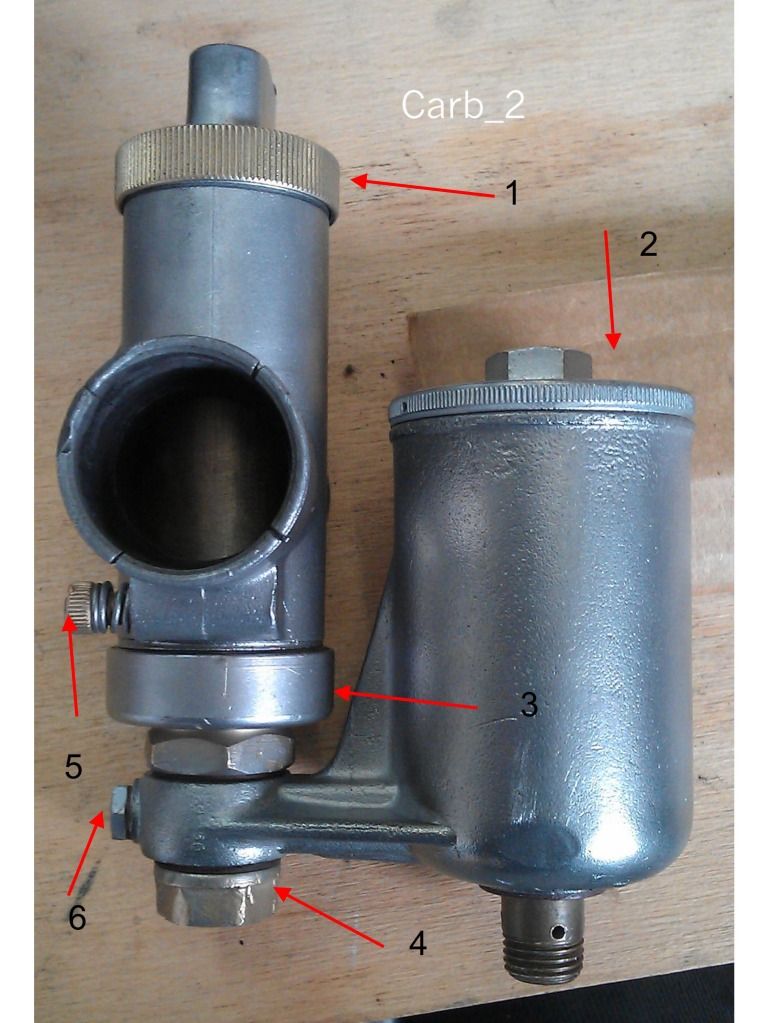
And are all this 6 parts plated with chrome? Which are dull and which are bright? The reason I ask is, I am going to plate some parts of my bike and I would like to include this parts into the package already.
Material:
1: brass
2: alloy
3: brass
4: brass
5: brass
6: steel
Maybe one of you got a picture of a originally restored carb.
Thanks a lot
email (option): phillip.thaler@gmx.at
All parts are interchangeable between the 76 and the 276 with the exception of the mixing chamber body and the jet block, which have to be kept with the correct partner.
The Amal notes for military Norton carbs refer to "Usual bright parts dull chrome" and this applied to all of the external brass parts with the exception of the petrol union nuts (these would have been chromed by Norton once they had made up the fuel feed pipes).
It is actually most unusual to find any unplated brass parts on a British motorcycle of this era until some parts were left unfinished due to wartime economies.
The mixing chamber and float chamber bodies were originally silver lacquered.
If you can find one, your carb would originally have had a chromed brass cover to the float chamber and these continued for some time after the introduction of the alloy chambers.
Thanks,
I think I got it now.
Phillip
email (option): phillip.thaler@gmx.at
